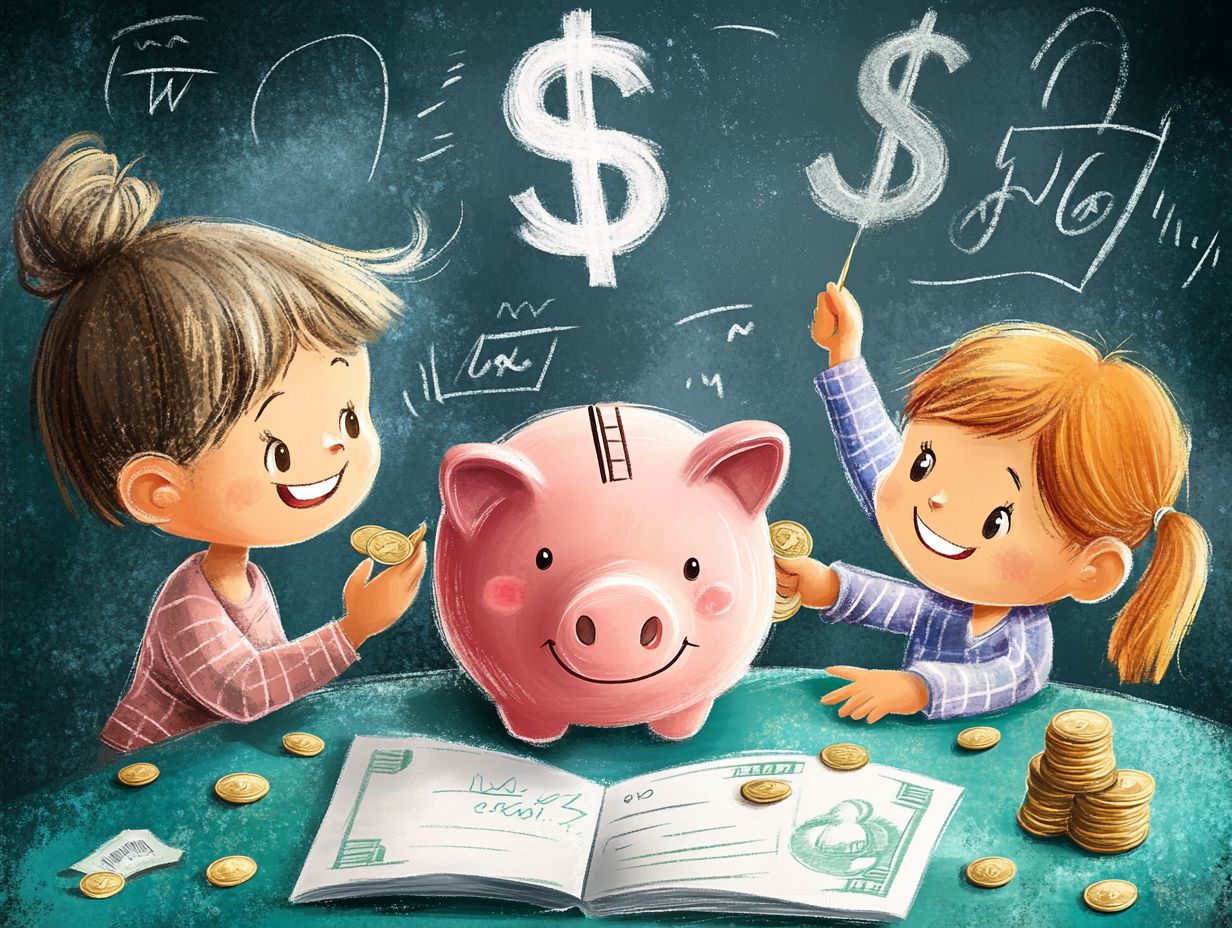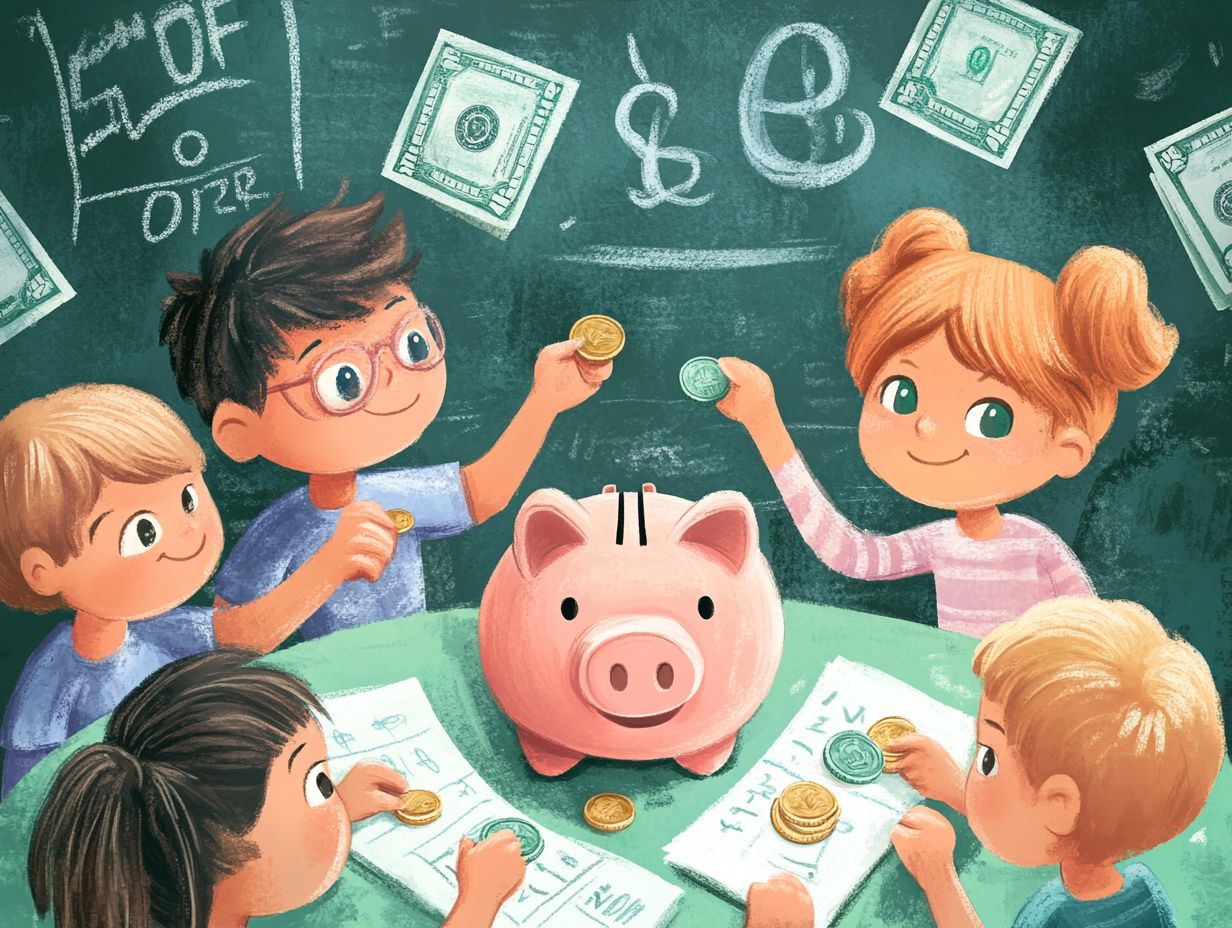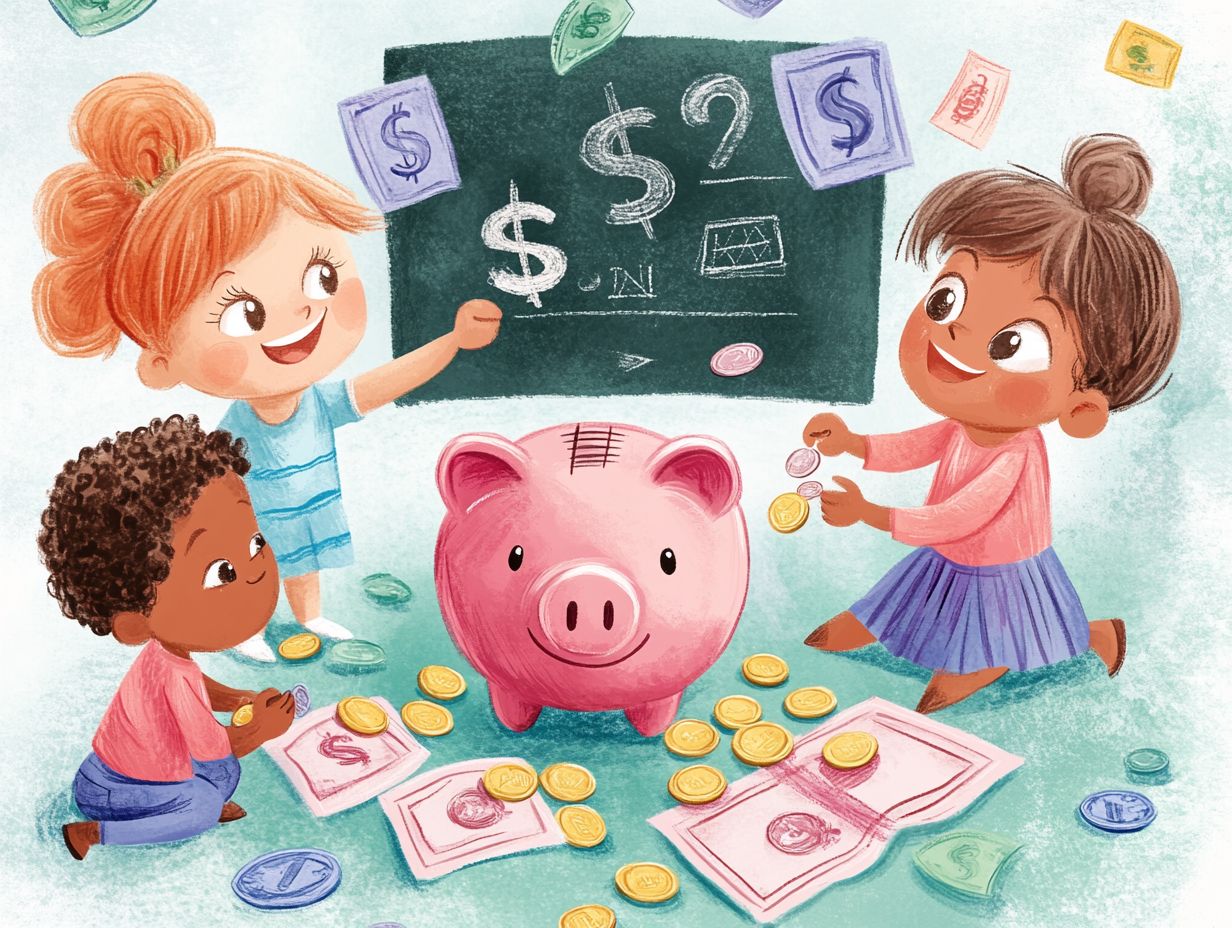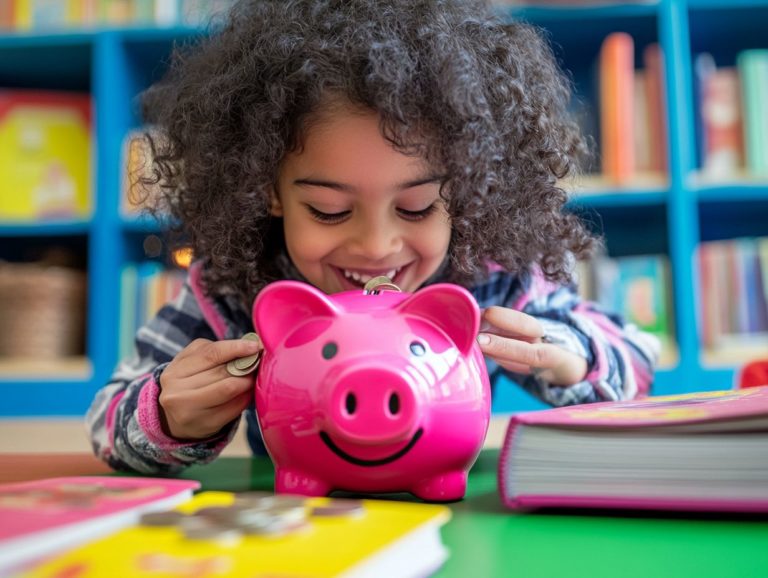What Are the Top 5 Money-Saving Tips Every Child Should Know?

Neale Godfrey is the financial voice for women and multi-generations and a world-renowned speaker and author, who has inspired millions through her work. She motivates, trains, educates, and frankly, entertains by delivering her core message: Empower yourself to take control of your financial life.
Teaching children about money management is essential in today’s financial environment.
As children grow and move into their teenage years, knowing how to save, budget, and differentiate between needs and wants becomes essential.
This article explores the top five money-saving tips Every child should learn the importance of saving money from a young age and how to create a budget.
By teaching kids these skills, we give them the ability to make informed financial decisions that can lead to a secure future.
Key Takeaways:
Why is it Important for Children to Learn About Money Management?

It’s important to educate children about managing money to support their development and their financial health later in life. By teaching children about money early on, parents can help them learn why it’s important to save, plan their spending, and make wise money decisions.
This helps kids set financial goals, distinguish between needs and wants, and develop good money habits, getting them ready for real-life responsibilities and challenges. As noted by Edutopia, early financial literacy education can yield significant long-term benefits.
Early lessons in managing money also provide them with the skills to deal with their income, expenses, and even learn the responsible use of credit as they grow older. For a more comprehensive understanding, our deep dive into the basics and risks of credit and debt offers valuable insights.
Tip #1: Start Saving Early
Starting to save early is important for children as it sets the groundwork for their money habits and knowledge.
By using tools like a piggy bank or a savings account for kids, parents can teach their children the importance of saving part of their allowance for various goals, such as emergency funds or specific charitable donations. As mentioned in our overview of Save, Spend & Share Jars, these methods can effectively help children learn to manage their money.
This early learning helps kids grasp the value of money and the benefits of reaching financial goals, building habits that encourage long-term financial success. As Schwab highlights in its analysis, understanding the power of long-term compound interest investments can significantly boost these financial habits and success (recommended reading).
How Can Children Start Saving Money?
Children can begin saving money by utilizing simple tools and concepts that make the process engaging and educational. One effective method is to establish a piggy bank where kids can deposit a portion of their allowance or gifts, promoting the habit of saving from an early age. Parents can open a savings account for their children, which helps them learn about banking and allows them to see their money increase over time with interest.
To improve their saving habits, children can be encouraged to put away a set amount of any money they get, whether it’s from allowances, chores, or gifts.
This small yet impactful strategy instills fiscal discipline and provides a sense of achievement as they see their savings accumulate.
Parents are important in helping their kids understand the importance of saving money instead of spending it impulsively. Engaging in discussions about financial goals, like saving for a desired toy or experience, reinforces the value of delayed gratification and helps children recognize the rewards of their hard work.
By creating a caring environment, caregivers can help their child learn about money and develop saving habits for life.
What Are the Benefits of Starting to Save Early?
Beginning to save money early gives many advantages that continue into later life, helping people learn financial skills and manage money well. Children who save at a young age are more likely to develop positive financial habits, which can lead to achieving various financial goals as they grow older. Teaching children to save regularly helps them learn that waiting for what you want is important and shows them that working steadily over time leads to rewards. This sets them up for managing money well as adults.
By consistently saving part of their allowance or money received as gifts, they learn to focus on what is necessary and what is desired, helping them make thoughtful choices that will benefit them for life.
For example, a child who saves diligently may find it easier to resist impulse purchases, instead directing their funds towards larger aspirations like a video game console or a new bicycle. According to an insightful analysis by CNET, understanding the psychology of saving can significantly enhance these habits, teaching children the value of setting and achieving long-term financial goals.
This subject helps develop sensible spending habits and teaches dealing with money problems, providing people with the skills needed to manage adult financial responsibilities.
Tip #2: Set Financial Goals

Setting financial goals helps children manage their money and prepares them for handling money later in life. When kids choose specific goals-saving for a toy, video game, or charity-parents can give them purpose in their saving efforts.
This activity motivates children to make a budget that matches their goals, teaching them important lessons about managing costs and learning how budgeting connects to saving and spending.
What Are Some Examples of Financial Goals for Children?
Children can set many financial goals to help them learn why saving and budgeting are important. For example, a child might want to save money for a new toy, a video game, or even to donate to a charity they care about. This gives them a clear goal to work towards. You might also save money for things like a school project or a trip later on. This will help them learn how to plan and handle their money well.
When kids set these goals, they learn to tell the difference between things they want and things they need, and this helps them manage their money more carefully.
For example, a child who chooses to save their weekly allowance for a new skateboard learns to wait for something they want and practices managing their money.
By dividing bigger purchases into smaller, manageable goals, like saving a set amount each week, they can feel the achievement of meeting their goal.
These practices teach young people to handle money wisely, helping them build long-term financial knowledge and skills.
How Can Children Stay Motivated to Reach Their Goals?
Keeping kids motivated as they save money is important, and there are some practical methods parents can use. A way to help children is to suggest they set small, step-by-step goals that lead to a bigger goal. This makes it easier to see how they are doing and praise their successes as they go.
Giving rewards, like extra money or special treats when goals are met, can help keep children interested and happy about saving money.
Visual progress trackers, like colorful charts or sticker boards, can be particularly inspiring for young savers, providing a tangible sense of accomplishment.
Parents are important; by talking about financial goals and often checking the child’s progress together, parents show how important saving is.
Teaching children to allocate their funds for distinct purposes, such as spending, saving, and donating, can also nurture a sense of responsibility, allowing them to understand the value of goal-setting in a meaningful way.
Tip #3: Differentiate Between Needs and Wants
Teaching children the difference between needs and wants is important because it influences how they spend money and manage their finances.
Parents can explain that needs are essential items like food, clothing, and education, while wants are non-essential items like toys and games. See also: Needs vs Wants: Critical Lesson for Financial Planning, which offers deeper insights into this fundamental financial concept.
By learning this distinction early, children can prioritize their spending, make wise financial decisions, and manage their money more effectively.
What Are Some Examples of Needs and Wants for Children?

It’s important for kids to know the difference between needs and wants. Giving clear examples can help make this idea stronger. Basic needs for kids include:
- Food
- Clothing
- School supplies
- Shelter
These are necessary for their daily functioning and well-being. In contrast, desires might be for items like toys, video games, or fashionable clothes, which are fun but not necessary for living or well-being. Explaining these examples can help kids make better choices about their spending and what matters most financially.
Knowing this difference helps children think carefully and handle their pocket money or savings more wisely.
For example, a child might want to buy the newest action figure, but realizing that saving for a bicycle is more worthwhile can help them learn to set long-term money goals.
Teaching them how needs often come with a recurring expense, such as groceries or school fees, while wants tend to be one-off purchases, can help instill a sense of budgeting.
This skill is very important because it helps them handle their money well, allowing them to enjoy their hobbies without endangering their essential needs.
How Can Children Make Wise Decisions About Spending?
Helping children learn to make wise spending decisions is important for building their money skills and sense of accountability. One effective approach is to encourage kids to create a budget that outlines their income from allowances or gifts and how they plan to allocate it towards both needs and wants.
Parents can teach their children to consider if something is necessary before purchasing it. Encourage them to check if they truly need it or if it’s better to wait until other responsibilities are finished.
Parents playing a part in the learning process is important because it strengthens the value of these skills.
For instance, families can engage in discussions about shopping together, comparing prices and alternatives at stores or online. This helps turn shopping into an educational moment and encourages open discussions about what is important and how to manage costs.
Encouraging children to ask questions such as, ‘Is this the lowest price?’ or ‘How much will I use this?’ can help them develop critical thinking skills. Teaching kids to set money goals, like saving for a toy or funding a hobby, can help them learn patience and planning, important parts of handling money well.
Tip #4: Understand the Value of Money
It’s important for kids to learn about money. Parents can teach them that money comes from working-like doing chores, getting an allowance, or doing small jobs.
This helps kids see why money matters and learn how to spend and save wisely, preparing them to handle money as they get older.
How Can Children Learn the Value of Money?
Children can understand the importance of money by doing hands-on activities, talking about it, and engaging in lessons that improve their knowledge about managing money. Parents might consider giving kids an allowance to manage, allowing them to experience firsthand how to handle money, budget for expenses, and prioritize savings. Discussing the prices of everyday items and explaining ideas like earning, spending, and saving money can help them understand these concepts better.
Involving children in grocery shopping can serve as a practical lesson, where they can compare prices, identify discounts, and understand the value of budgeting for a family meal.
Creating a game about saving, such as setting goals to save for a toy or a treat, makes saving enjoyable and engages kids in making financial decisions.
Parents play a critical role in this learning process by actively discussing their own financial choices and creating an open environment for questions. This participation supports what children learn and helps them develop a sense of responsibility about handling money as they grow.
Why is it Important for Children to Understand the Value of Money?

Grasping the importance of money is key for children because it affects how they handle and decide on financial matters for the rest of their lives. When kids understand that earning money requires work and that it is not limitless, they start to make careful decisions about how to use and save their money. This basic knowledge prepares them for handling their money later. It also shows them how to be responsible with their finances, motivating them to manage their money well as they grow older.
When people start to understand the difference between what they want and what they actually need, they tend to make better shopping decisions, which results in more sensible spending habits.
This information helps them begin saving money early, allowing them to save for goals like education or purchasing their first car.
By teaching these principles, parents can help children develop a good relationship with money that will serve them well throughout their lives. This will give them the confidence to handle financial challenges and make choices that match their long-term goals.
Tip #5: Make a Budget
Making a budget is an important part of handling money. It helps kids learn to monitor their expenses and save for their goals.
By helping children figure out their income-from allowances or other sources-and sorting their expenses, parents can show them how to plan their money wisely.
This budgeting activity helps kids understand where their money goes, encouraging them to make informed choices about their spending and focus on their financial goals. For those interested in practical tools to enhance this learning, you might find the Budgeting Sheets for Kids: Practical Guide invaluable.
How Can Children Create a Budget?
Children can create a budget by following a simple process that helps them manage their money effectively. Begin by noting down all the money they receive, whether it comes from allowances, gifts, or small jobs.
Next, arrange what they plan to spend money on, such as buying toys, games, or putting money aside for later plans. When kids organize their budget, they understand their money situation better. They learn to manage their money carefully, spending and saving according to their priorities.
Next, they should separate their expenses into essentials and non-essentials to see what they really care about.
After deciding on categories, it’s beneficial for children to set specific savings goals, like buying a new video game or saving for a bike.
As they gain experience in budgeting, children will need to review their budgets regularly-perhaps monthly-to reflect on their spending habits and make necessary adjustments.
This regular review helps children learn about finances and promotes careful handling of money from a young age.
Why Should You Create a Budget?
Creating a budget teaches children how to manage money and improves their financial knowledge. By budgeting, kids learn how to prioritize their spending, ensuring that they can save for important financial goals while still enjoying their money responsibly. This practice helps children learn to be responsible by teaching them to keep track of their spending and change their plans when necessary. It gets them ready for handling more difficult money matters later on.
One of the key advantages of budgeting is that it instills improved financial discipline from a young age. Kids who learn to budget can get better at saving by putting some of their pocket money or earnings aside for things they want to buy later, like a toy they love, a video game, or a special outing.
For example, if a child wants to buy a new bike, putting aside some money each week helps them reach that goal and also teaches them to make wise choices about spending money on snacks every day or week. These experiences help young people make better spending decisions as they grow up.

Neale Godfrey is the financial voice for women and multi-generations and a world-renowned speaker and author, who has inspired millions through her work. She motivates, trains, educates, and frankly, entertains by delivering her core message: Empower yourself to take control of your financial life.






